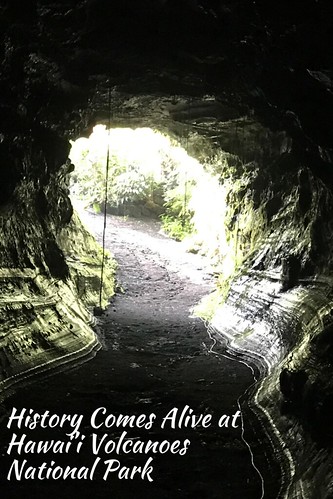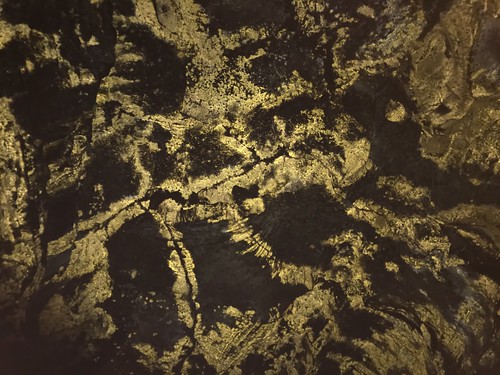History Comes Alive at Hawai’i Volcanoes National Park
As the Big Island's top attraction, Hawai’i Volcanoes National Park is the perfect place to learn about the geological history of the Hawaiian Islands. Two volcanoes, Mauna Loa and Kilauea, can be visited inside approximately 500 square miles of a natural environment. About 90 percent of Hawaii's trees, plants, and flowers are endemic. They cannot be found anywhere else in the world. The remaining species are either indigenous (in Hawaii and elsewhere) or non-native (introduced by mankind).

Lessons Learned Driving Across the Island
With only a day set aside to visit the national park, plus the long commute time from the west side of the island, I realized the necessity for planning. To minimize the inconvenience of the four-hour round-trip drive, I arranged a Hawaii Forest & Trail tour. At a preselected time, a small van offered curbside pick-up and drop off at our hotel, the Westin Hapuna Beach. Our knowledgeable and outgoing guide and driver, Justin, was a non-stop source of facts throughout our journey.
To reach the east side of the island, it was necessary to leave the coastal region early in the morning and traverse through the mid-section to the other coast. Along the way, Justin let us know that four out of the five volcanoes (Kilauea, Mauna Loa, Mauna Kea, Hualalai, and Kohala) on the island are considered active. At one point, we drove between Mauna Kea and Mauna Loa. The years of the Big Island's latest eruptions were casually mentioned as if they were the ages of famous people. Some of the passengers became a little concerned when he plainly stated that three volcanoes were overdue to erupt since the hot spot is currently under the Big Island. However, Justin did make it clear that no one believed any eruptions were imminent. The farther the distance from the hot spot, the less chance of an eruption. Kilauea sits on top of the hot spot.
Our lesson in volcano history continued when he reviewed how the magma came out of a hot spot on the seafloor of the Pacific Plate. Interestingly, some of the volcanoes have more volcanic material under the water than above. Mauna Loa Volcano is 56,000 feet above the seafloor, which is 27,000 feet taller than Mount Everest. The formation of volcanoes in Hawaii is a bit different from what I recall learning at other volcanic locations, where volcanoes were formed when the tectonic plates came together.
We also learned about some of the indigenous species on the island. Justin singled out the Ōhiʻa lehua (Metrosideros polymorpha), the predominant native plant on the island, and the lehua flower, the official flower of the state. Mother Nature has given this flowering tree the resiliency to prosper in new lava fields. Surprisingly, this vegetation is not adversely affected by the poisonous gases that are part of volcanic eruptions.

Lehua flower
Justin was quick to point out how some of the trees, plants, flowers, and animals are detrimental to the island's wellbeing. For example, the introduction of the nonindigenous Albizia tree has impacted the island's ecosystem. This fast-growing tree changes the nitrogen levels in the soil, and its large limbs and branches offer too much shade to native Hawaiian plants. Its oversized tree branches are prone to causing injury during tropical storms. While efforts are being taken to control this invasive species, the cost to remove the trees minimizes the efforts. Justin also described other plants and animals that threaten Hawaii's natural ecosystem.
Protesters
Protesters were positioned adjacent to the access roadway leading to the Mauna Kea observatory. While telescopes have been on the indigenous people's land for decades, plans to significantly expand the facility over a 10-year period was met with intense opposition from locals as well as outsiders. The outcome of the protests remains uncertain.

Protesters camped by the road
A Bit of Hawaiian Culture
To better understand the Native Hawaiians' view of the volcanoes' sacred role in their lives, Justin retold the story of Pelehonuamea (also known as Pele or Madame Pele), a goddess capable of controlling volcanic eruptions and lava flows. According to Hawaiian legends, she resides at the summit of Kilauea in the Halema'uma'u Crater. To this day, Hawaiians respect and admire this powerful and jealous deity.

View into Halema'uma'u Crater
Exploring the National Park
As we approached the wetter eastern side of the island, the rocky, barren terrain was replaced by tall ferns and lush greenery. Our van drove in and out of rainy conditions, and the outside temperature was considerably cooler in this damp environment. After entering the park, we learned about the devastating effects of the 2018 eruptions. The infrastructure of the park was comprised resulting in unsafe conditions on some roads and a few trails, as well as popular attractions- the Jaggar Museum, Halema'uma'u Crater Overlook, and the Thurston Lava Tube. It is always wise to check with park rangers for a list of closures before embarking on a park outing.
To make the most of our limited time, we took Crater Rim Drive to a parking lot near the Kilauea Military Camp, where members of the military can stay in small cabins. From our vehicle and from the sidewalk, we could see pockets of steam emanating from the ground. According to Hawaiian tradition, people who walk through the steam are spiritually cleansed. Our small group was well cleansed before embarking on our hike.

Steam rising from the ground
We followed a dirt path to a place where we could look into the Kilauea Caldera that had the smaller Halema'uma'u Crater inside. When we reached an observation point, we were reminded that we were at Pele's home. We were handed red ohelo berries, an edible endemic plant, to throw into the crater as an offering to Pele. Justin recommended not eating any of this fruit until after we had followed this ritual.
When we drove near the windward side, we were able to see an upside-down rainforest. The foliage was thicker at the bottom, and the sky was visible. At another point along the Chain of Craters Road, we trekked into a forest area to take pictures of the Keanakiako'I Crater.

Pathway near Kilauea Caldera
We observed the remnants of the 1974 summer lava flow by examining the different types of formations. I was busy taking photos while Justin described the different types of lava that formed along our pathway. From thin strands to teardrops to roughly shaped chunks, we observed Mother Nature's handiwork. Our steps were calculated as we avoided the holes caused by tree trunks previously consumed by volcanic fire and large cracks in the lava. Vegetation sprouted up in random spots.

Opening in lava caused by tree trunk
After eating our lunch at picnic benches near the Kilauea Visitor Center, we had some free time to explore the area adjacent to the Volcano House, which originally opened in 1846. Several other structures were built between then and when the current hotel was constructed in 1941. We lingered along the walkway and took time to appreciate the dramatic views from the edge of the Kilauea Crater.

The view near the Volcano House
Incredible Bonus—Trekking Inside a Lava Tube
Next, we drove a substantial distance to an offsite property where we could walk inside an enormous lava tube. The national park's lava tube was closed after a series of earthquakes in 2018 made this natural plumbing system unsafe. During volcanic eruptions, the hot lava is exposed to air and subsequently cools and hardens. As the lava continues to flow underneath, it creates full-sized tubes that eventually become hollow after the lava drains.
While a few public alternatives exist on the island, we had the good fortune to visit one on private property. Until we were within a few feet of the entrance, the lush tropical foliage camouflaged the opening.

The entrance to the lava tube
With flashlights, we followed Jordan, a national park certified guide, down a steep slope into the dark cave with ceilings approximately 25 feet tall. Layers of volcanic material surrounded us.

Walking down the slope into the lava tube
The walls of this inner sanctuary were covered with yellow and gold microbial mats resembling a modern work of art imbued with gray, black, gold, and yellow irregular patterns. Splotches of sunlight came through an open area at the top of the cave, enabling vegetation to grow in an environment filled with stalactites. The natural light stood in sharp contrast to the darkened cavern.

A section of the wall inside the lava tube
Even though the time in the van was more than anticipated, the experience made up for the long drive. During our decades of travel, we have explored numerous volcanoes. This was our first opportunity to actually trek into a lava tube.
I gladly passed up a day at the beach to learn about how the Hawaiian Islands were formed and continue to change over time. By taking a Hawaii Forest & Trail tour, history came alive at the Hawai’i Volcanoes National Park.
Update
On Dec 28, 2019, the summit of Mauna Kea opened to the public. While some protestors are located near the road, the access remains open. On Friday, Feb 21, 2020, Hawaii Volcanoes National Park permitted visitors once again to visit the Thurston Lava Tube. This attraction is open 24 hrs a day.
Sandy Bornstein, the History Comes Alive Through Travel Editor for Wandering Educators, has visited more than 40 countries and lived as an international teacher in Bangalore, India. Sandy’s award-winning book, May This Be the Best Year of Your Life, is a resource for people contemplating an expat lifestyle and living outside their comfort zone. Sandy writes about Jewish culture and history, historical sites, family, intergenerational, and active midlife adventures highlighting land and water experiences.
All photos courtesy and copyright Sandy Bornstein
Disclosure: The Traveling Bornsteins received a media rate for the Volcano Unveiled tour




















